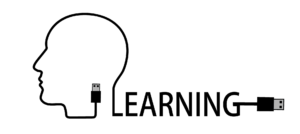
Data-driven learning solutions are changing the face of education today. In an increasingly digital world, the employment of extensive analytics in daily operations aids understanding of students and their needs a near-unquantifiable amount. Assessment of students is, by use of data-driven learning systems, a 360 degree vision now; not just a piece of paper. This to such an extent that longitudinal data analysis will soon become a fixture not only in schools at the practical level, but in policies, too. A branch of big data, hard numbers rather than statistics are what data-driven learning solutions look at, finding negative and positive trends in learning, identifying them and addressing them far more quickly and with more beneficial outcome than in the days before implementation of such systems was in effect.
Facts and Figures
This mode of operation is no more important than when it comes to seeking governmental school funding. By collecting and analyzing student performance figures, that data is aggregated, and a school’s merit or otherwise thereby evaluated. The aggregated or longitudinal data also assists to catering to students’ individual educational needs. These are not dry numbers; these figures pertain to the development of young minds. In short, what data-driven learning facilitates is an accelerated route to establishing the best course of action for both schools themselves and their attendant pupils, in a wide range of respects. What is fundamentally gained by the implementation of data-driven learning solutions is time.
The Dangers
Of course, being digitally-enabled, there come the correspondent risks from malware and ransomware, and information held by schools can be highly sensitive data. Indeed, as opposed to the benefits to a school as a whole, when it comes to the data trail of an individual student, some require reassurance. Essentially, only the principal or equivalent level of staff can access all data, but one teacher’s student data cannot be accessed by another teacher. There is a hierarchy in order to retain a safety net.
Given, also, the increasing use of tablets and other handheld devices in institutions, should an establishment become victim to hacking, additional avenues of recovery and tracking of data would always be explored. For example, it might be they need to use a mobile forensics service. Just as technology has evolved to enable such digital acts, so methods of punishing those crimes have transformed, also. There will perhaps ever remain concerns over data security risks. However, the time saved in using data-driven rather than tradition learning systems balances, if not outweighs, those risks.
Reporting and Forecasting
It goes without saying that data analysis produces more easily predictions and reports. Data is attendant where man is not, able through inputted facts and figures to foresee whether a student with fail or drop put, as well as to percentages of those who went to filed and listed colleges will need extra courses to maintain or reach the required level. Data leaves a pattern which analysis programs can track, read, and explain in human terms.


Leave a Reply